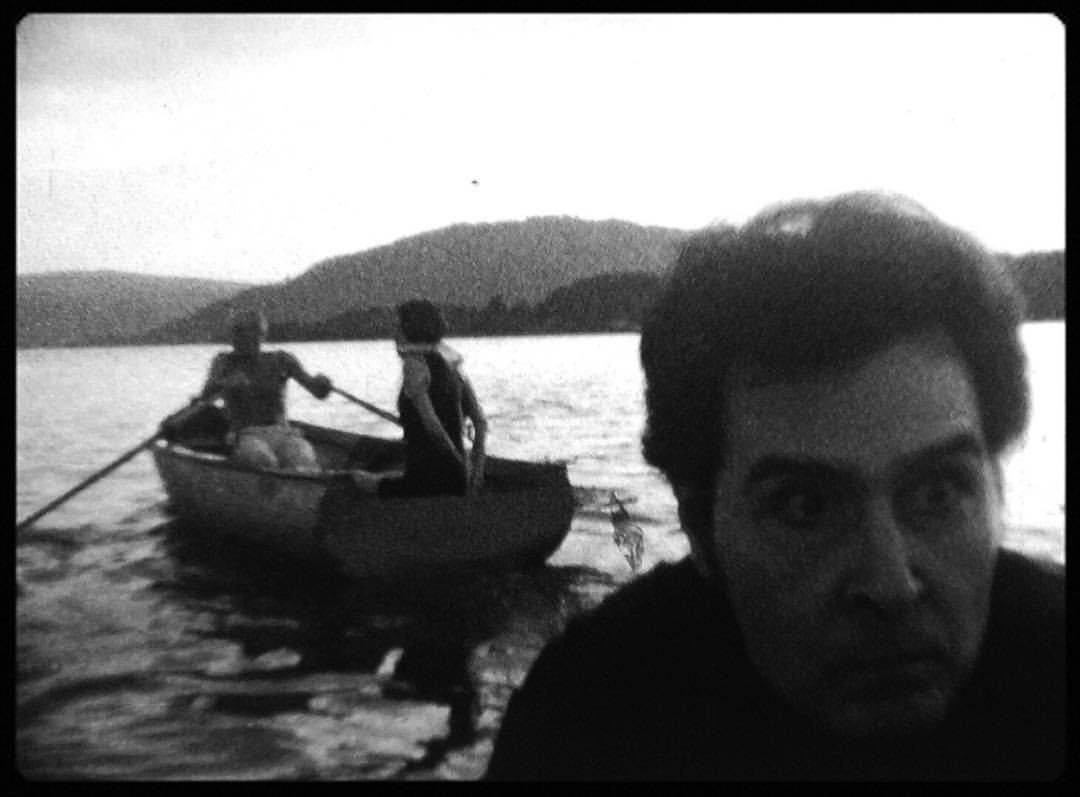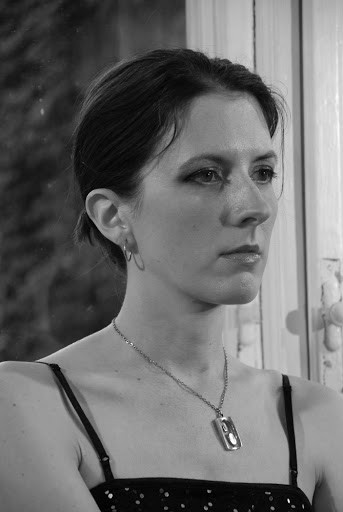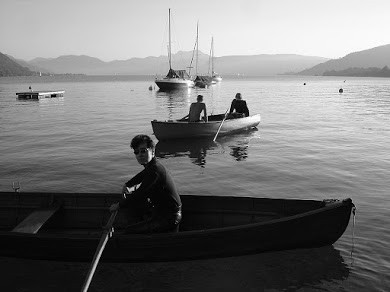What: A four-day multimedia event with dozens of film screenings, entertainment and technology panels and discussions, parties, live music shows, and food programs.
When: Thursday, October 31st, through Sunday, November 3rd
Where: Numerous Overton Square venues, including Playhouse on the Square, Malco’s Studio on the Square, The Circuit Playhouse, Memphis Brooks Museum of Art, and Local Gastropub; and downtown sites, including Earnestine & Hazel’s and The Warehouse
Full schedule: IndieMemphis.com
The 2013 Indie Memphis film festival kicks off not with a movie but with food. At 5 p.m. on Thursday, October 31st, the “Best Bites” reception at Playhouse on the Square features selections from winners of this year’s Memphis Flyer “Best of Memphis” poll (shameless plug). For the rest of the evening, you have your pick of the horror films (this being Halloween night) Escape from Tomorrow, James Whale’s classic Frankenstein, and Roman Polanski’s Rosemary’s Baby, the TV pilot to Fox’s J.J. Abrams-produced Almost Human (which won’t air for a few more weeks), Touchy Feely, a buzzy ensemble drama starring Rosemarie DeWitt and Ellen Page, and local indie-pop group Star & Micey, who are starring (and Micey-ing) at an after-party concert at Earnestine & Hazel’s.
Thus, Indie Memphis in a nutshell: killer movies that haven’t opened here, classic films you can’t usually see on the big screen, the best of local music and food, and scores of filmmakers (note: Polanski will not be in attendance), performers, patrons, and scenesters all ambling between a diverse set of venues magnetized to Overton Square.
When Indie Memphis wraps up Sunday evening with an awards show and encore screenings of the fest’s best, it will have presented 50 feature films, 82 shorts, 13 panels, conversations, and seminars, and 11 parties and social events. It’s fiercely local — see our significant artistic talent on display in short films such as I Wanted To Make a Movie About a Beautiful and Tragic Memphis — but notably national, with Memphis premieres of major, Oscar-contending films (August: Osage County, Nebraska, and Mandela: Long Walk to Freedom), indie behemoths (Drinking Buddies, As I Lay Dying, Zero Charisma, The Sacrament), critical darlings (Short Term 12, Touchy Feely, Computer Chess), and diverse documentaries (Hit & Stay and The Great Chicken Wing Hunt).
It is a multimedia, multisensory extravaganza, arguably (or maybe definitively) the Mid-South’s annual cultural high-water mark.
What follows is a list, admittedly subjective, of some of the highlights. You can sleep on Monday.
— Greg Akers
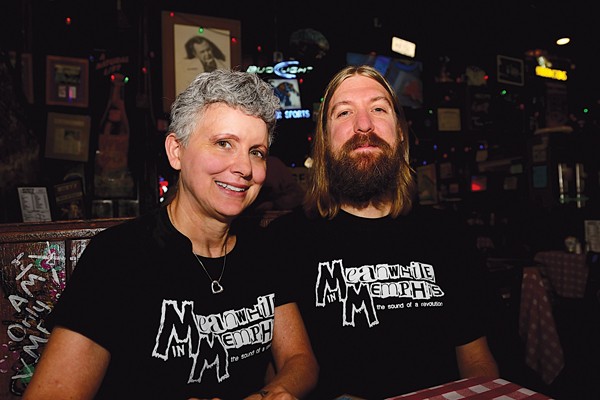
Meanwhile in Memphis directors Nan Hackman and Robert Allen Parker
Meanwhile in Memphis:
The Sound of a Revolution
Saturday, 6 p.m., The Circuit Playhouse, with a filmmaker Q&A after the screening
Would you like to see Tav Falco take a circular saw to his guitar while onstage with Mudboy & the Neutrons? Or tug on the narrative thread connecting Furry Lewis to contemporary Memphis rap and indie rock? Or would you just like to hear an amazingly powerful, sometimes terrifyingly aggressive collage of sounds that prove without question that the music didn’t leave Memphis when the music industry did?
Fans of modern Memphis music, especially those who were drawn to Chris McCoy’s Antenna documentary, a hit at the 2012 Indie Memphis film festival, will want to check out Meanwhile in Memphis: The Sound of a Revolution, an exhaustive look at the Bluff City’s underground music scene in the ’70s, ’80s, and ’90s, directed by Mid-South musician Robert Allen Parker and videographer Nan Hackman. The film features engaging and insightful interviews with Falco, Jim Dickinson, Sid Selvidge, DJ Spanish Fly, Monsieur Jeffrey Evans, DJ Squeeky, members of the Oblivians, the Grifters, and the Klitz, and numerous other scene-shaping performers. While Antenna captured the essence of Memphis’ punk and DIY culture as it coalesced in the ’80s and ’90s, Meanwhile in Memphis looks far beyond the iconic Midtown venue to consider the music itself, the musicians, and the not always evident connectedness between generations and genres, which makes the scene seem like a sprawling, occasionally dysfunctional family.
Meanwhile in Memphis introduces viewers to a city in decay: Stax is closed and American Recording is boarded up. But there’s life in the ruins. Weeds spring up in abandoned lots, and the musicians who came of age in Memphis in the ensuing decades were every bit as hearty as wild grass.
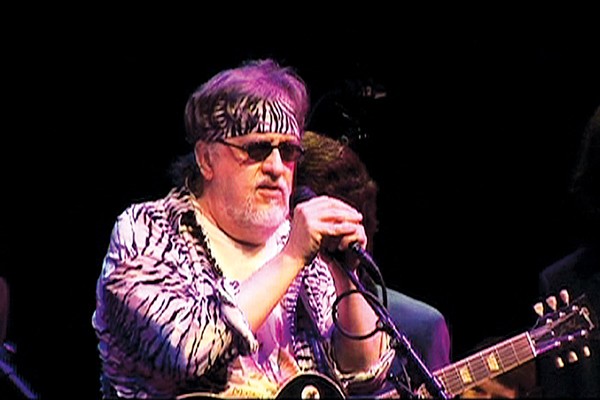
Meanwhile in Memphis, Jim Dickinson
It’s the first feature film for both Parker and Hackman and was shot over a period of seven years. Like the subject at hand, what’s missing in terms of polish is more than made up for in smarts and substance.
“I really wanted these musicians to tell their story,” says Parker who, when not working his day job selling records at the Memphis Music store on Beale, plays guitar in three area bands.
The film tells the story of two distinct scenes with common roots, evolving alongside one another and sometimes converging in surprising ways: the predominantly white Midtown/downtown rock scene as defined by artists ranging from Alex Chilton to Alicja Trout and the buck-and-crunk scene that blew up in North Memphis and Orange Mound.
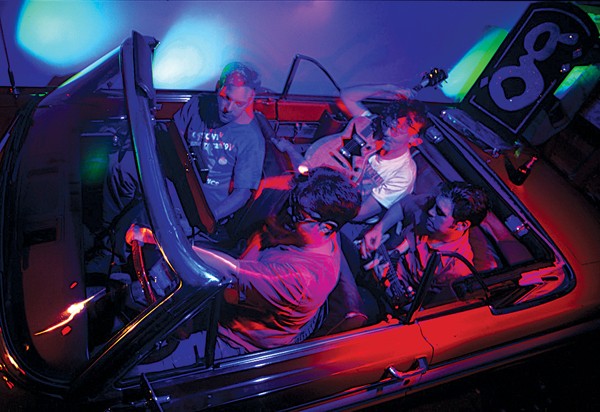
Meanwhile in Memphis, The Grifters
Fascinating interviews capture the essence of contemporary artists like Harlan T. Bobo and the North Mississippi Allstars, with supporting commentary from Boo Mitchell of Royal Studios, Shangri-La founder Sherman Willmott, and music writer Robert Gordon.
Oblivians/Reigning Sound frontman Greg Cartwright defines both the film and its cast when he attempts to describe the feeling you get when you realize you’re part of a legacy and connected to something much bigger than you could have ever imagined. Meanwhile in Memphis isn’t about famous people. It ignores revolutionary figures like Elvis Presley and Otis Redding and, in doing so, makes a strong case that the revolution continues. — Chris Davis
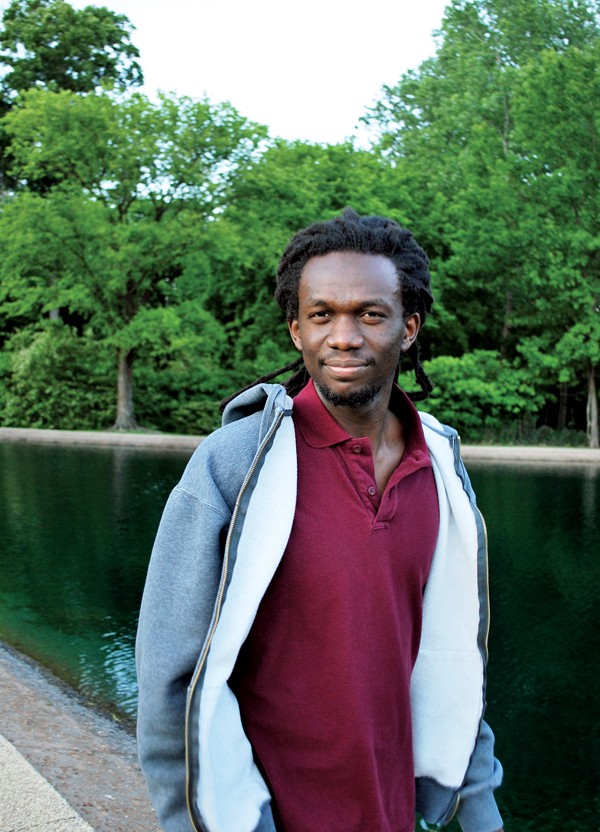
Orange Mound, Tennessee director Emmanuel Amido
Orange Mound, Tennessee:
America’s Community
Saturday, 10:45 a.m., Playhouse on the Square, with a filmmaker Q&A after the screening
Fans of local history will appreciate the documentary about a Memphis neighborhood, Orange Mound, Tennessee: America’s Community. Filmmaker Emmanuel Amido captures the testimonies of past and present residents of Orange Mound regarding the struggles it’s endured, its many successes, and the unprecedented events that took place there.
Orange Mound, Tennessee: America’s Community begins with an a cappella performance of “My Soul’s Been Anchored” by the Melrose High School choir. This is followed by a visual history lesson on the neighborhood.
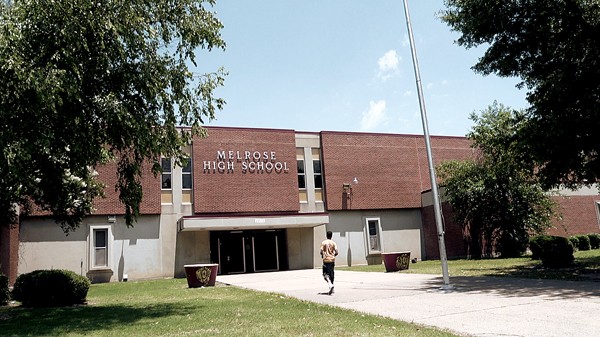
The area was once a plantation owned by John Deaderick in the 1820s. In the mid-1890s, real estate developer Elzey Eugene Meacham purchased the land and divided it into small, narrow lots and marketed them exclusively to African Americans.
The area became the first African-American neighborhood in the United States to also be built by African Americans; residents constructed shotgun-style houses on the lots that were sold to them by Meacham. These homes would go on to house generations of families. And many of these families built and owned their own properties, churches, and schools in Orange Mound.
Other facts, such as how the neighborhood earned the moniker Orange Mound, are highlighted in the documentary. (The area boasted countless Osage orange trees during its early days.)
Grammy Award-winning jazz saxophonist Kirk Whalum, National Civil Rights Museum president Beverly Robertson, and University of Memphis professor Charles Williams are among those who make appearances in Orange Mound, Tennessee: America’s Community.
Amido makes sure to not only focus on the positive attributes of Orange Mound but also the less fortunate characteristics as well. The documentary explores how the neighborhood went from being one of Memphis’ most thriving areas economically to one of its most impoverished and crime-ridden. This is largely attributed to many of its residents migrating to other areas of the city during the civil rights era, which left a void in the sense of community that Orange Mound once enjoyed.
A solid effort to say the least, Amido does an excellent job of capturing the meat and potatoes of what the documentary form can entail and the message that’s most significant: Orange Mound is an area with a rich history, unique culture, and strong sense of community. — Louis Goggans
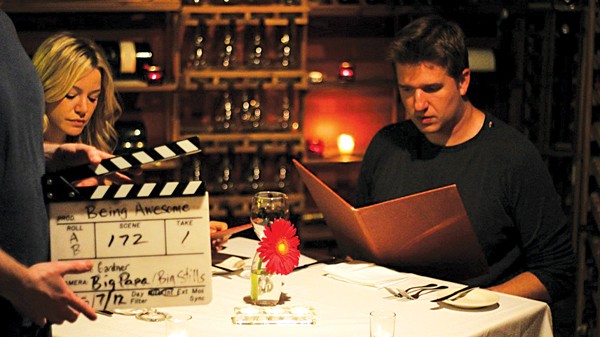
Being Awesome
Being Awesome
Sunday, 12:30 p.m., The Circuit Playhouse, with a filmmaker Q&A after the screening
This feature from Memphis director Allen C. Gardner stars Drew Smith as Lloyd, a divorced art teacher who’s lost his passion for life, and Gardner as Teddy, the lovable basketball jock who still thinks of high school as the glory days. At their high school reunion, the pair connect over their unhappiness with the way life turned out. Idealist Teddy suggests the two stop being depressed and just be awesome.
For a while, Lloyd has a bit of a harder time finding his artistic muse than Teddy, who seems to jump headfirst into something meaningful. Being Awesome‘s emotional dialogue, the real meat of the film, sometimes is all too real — awkwardness and all. It’s a charm that leaves you to cheer on Teddy and Lloyd during this coming-of-middle-age story. — Alexandra Pusateri
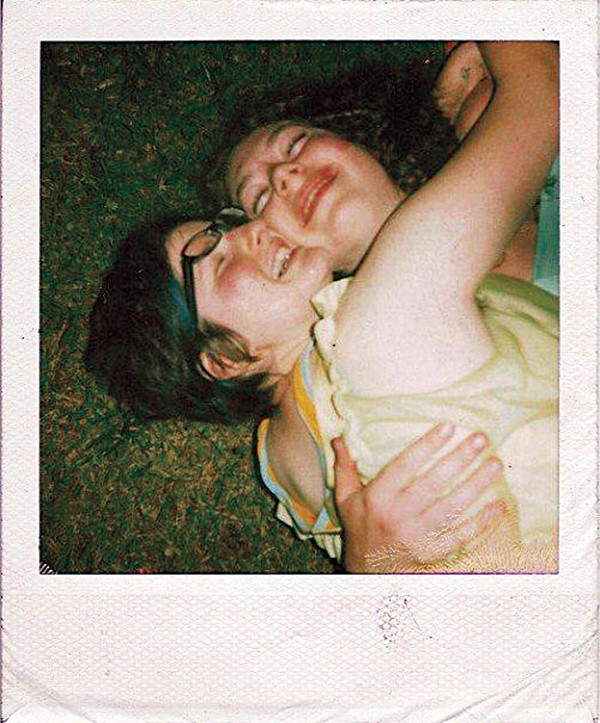
What I Love About Concrete
What I Love About Concrete
Saturday, 1:30 p.m., The Circuit Playhouse, with filmmaker Q&A after the screening
A young girl gets out of a stranger’s bed in a house where she’s never been before. She’s covered in downy white feathers. She pulls back the covers and finds a dead bird.
Ah, the perils of being a teenager! Which is exactly the premise of What I Love About Concrete, the debut feature from local filmmakers Katherine Dohan and Alanna Stewart. The lovingly made, sweet bildungsroman finds Molly (Morgan Rose Stewart), a junior at Black Swanson High School (fictional, alas), who is struggling to make sense of her body’s changes and her burgeoning sexuality. The film swaps the horror-repulsion of adolescence in Carrie for the magical unrealism of seeing but not understanding what it means to transform into an adult.
What I Love About Concrete does a lot with a little budget, including some inspired human-sized bird costumes. The film also features hilarious supporting turns from local talent including Markus Seaberry, Bill Baker, Kimberly Baker, Sara Chiego, and The Commercial Appeal‘s John Beifuss (swoon!).
— Greg Akers
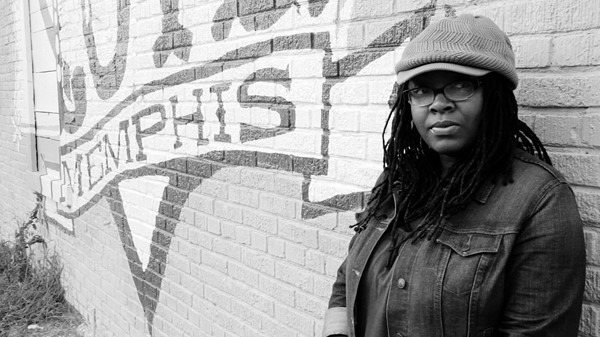
I Am Soul, Tonya Dyson
I Am Soul
Saturday, 3:30 p.m., Playhouse on the Square, with live music by Tonya Dyson before the screening and a filmmaker Q&A after the screening
I Am Soul poses the question “What is soul music?” then attempts to answer that question by spotlighting one Memphis soul artist — Tonya Dyson, a singer/songwriter from Covington — introducing us to her family, church, and other aspects of her life that have influenced her music, and culminating with Dyson’s first Beale Street gig at B.B. King’s Blues Club. I Am Soul is a touching story of a talented, homegrown artist navigating her way through a city with a renowned musical legacy.
Alternating between Dyson’s story and the story of Memphis’ rich music history, I Am Soul shows that it takes more than just talent to make it in Memphis. In the film, Dyson calls Memphis a “music mecca” and says, “If you’re dedicated, and you’re focused, and you’re smart about how you do things, you can get a lot done in Memphis.” Her perseverance through life’s difficulties supports that assertion and shows that the artist is really what makes the music when it comes to soul.
— Hannah Anderson
“Secret Screening”
Saturday, 1:45 p.m., Studio on the Square, with audience and filmmaker discussion after the screening
I can’t say what the subject of the secret screening on Saturday will be. But, based on what I know, I will be there sight unseen, and if you are in any way interested in history related to Memphis, civil rights, and/or black power, consider taking the plunge with me. The audience will be the first to see a cut of a new documentary, produced by Craig Brewer, and to participate in a discussion about what you have seen. — Greg Akers
Escape from Tomorrow
Thursday, 7 p.m., Playhouse on the Square, with live music by John Lowe before and an actor Q&A after the screening
Few sights evoke more middle-class existential dread than that of a family trying to enjoy itself at a theme park. But that image is the linchpin of writer-director Randy Moore’s Escape From Tomorrow, which was secretly shot without permits at Walt Disney World in Lake Buena Vista, Florida.
Moore’s film begins inauspiciously: Family man Jim (Roy Abramsohn) is fired via telephone while on vacation with his wife and two kids. Suddenly, the tram Jim and his family must ride to reach the Magic Kingdom feels like a train headed somewhere far more sinister — a corporate-sponsored, all-ages concentration camp where bands of bored, diseased humanity trudge around mindlessly trying to survive in Mouseschwitz, frittering away the hours by waiting in line for rides and attractions that can turn threatening at any moment.
As Jim and his family try desperately to enjoy their time together, Escape From Tomorrow starts to look and feel like a lost or missing episode of Louie. Jim’s deep ambivalence about marriage, fatherhood, and basic human interaction (and his frequent, mournful sex daydreams about a pair of underage French girls he keeps seeing at the park) further underscore the film’s debt to the rhythms and ideas of Louis C.K.’s innovative, unpredictable TV series.
The opening 50 minutes of Escape From Tomorrow effectively and repeatedly prove that the Most Magical Place on Earth is as awful and alienating as Anytown, USA. But Moore loses steam after an eerie nighttime sequence set near Epcot. Yet the film’s uneven, increasingly paranoid and nonsensical final third includes a grim fairy tale about a former Disney worker driven mad from faking happiness all day long. When Mickey, Donald, and Pluto finally appear, they look as creepy as something conjured up on Bald Mountain. And after the film’s final image, you’ll never look at Tinker Bell in the same way again. — Addison Engelking
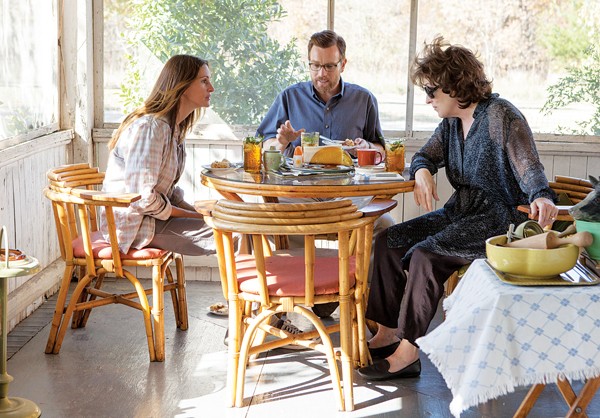
August: Osage County
August: Osage County
Friday, 6:15 p.m., Playhouse on the Square
I’ll risk the hyperbole. In its original dramatic form, Tracy Letts’ August: Osage County stands up alongside the works of playwrights like Tennessee Williams, Sam Shepard, and Arthur Miller. It is one of the greatest American family tragedies ever written, with a little something guaranteed to offend everybody: marital infidelity, incest, child molestation, Eric Clapton records, fibs, lies, falsehoods, etc. In spite of the unsavory ingredients, this dish comes together like apple pie — crusty, sweet at the center, and full of spice.
Set in Oklahoma during a blazing hot summer just before and after the drowning suicide of the Weston family patriarch, Letts’ drama plays out like a middle-class King Lear but with a stronger focus on the female characters and the legacies of dysfunctional relationships. The story gets darker and darker at every turn, but Letts’ breezy dialogue and his ability to find screwball humor and unforced slapstick in crisis and ensuing chaos is what makes him such an exciting voice for the theater and film.
The much-buzzed film adaptation was helmed by producer/director John Wells, with Letts adapting his own script. It features an all-star cast that includes Meryl Streep, Julia Roberts, Benedict Cumberbatch, Juliette Lewis, Dermot Mulroney, Ewan McGregor, Chris Cooper, and the aforementioned Shepard. — Chris Davis
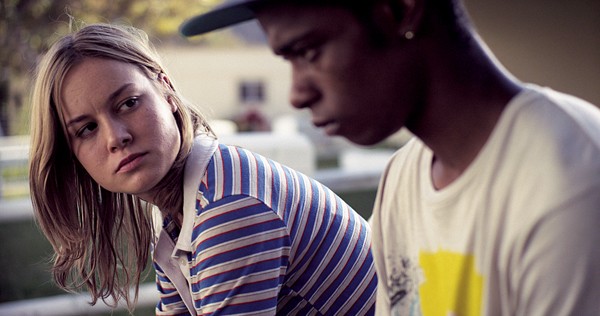
Short Term 12
Short Term 12
Saturday, 6:15 p.m., Playhouse on the Square, with live music by Mark Allen before and a filmmaker and actor Q&A along with reps from Youth Villages after the screening
No matter how many self-deprecating anecdotes they share — or how many self-inflicted physical scars they show — the youthful but wary optimists of Destin Daniel Cretton’s Short Term 12 are never sure how much they’ve actually helped the deeply damaged teens and tweens in their care. That’s because the kids they work with have been hurt so deeply and so often that they automatically distrust anyone who peddles any form of “I’m your buddy” BS.
But Grace (Brie Larson) and her colleagues at the titular foster-care facility keep trying anyway. Cretton follows Grace as she tries to separate the chaos of her work life from some unexpected developments involving her co-worker and live-in boyfriend Mason (John Gallagher Jr. in a sweetly lower-case performance).
Mason, who tells two stories that serve to open and close the film, is not as passionate and reckless as Grace. But he’s still very good at his job. The long scene where he provides the beat while a young man (Keith Stanfield) shares his anxiety about leaving through some brutally personal hip-hop lyrics is one of the film’s many emotionally complex high points.
Grace remains the focus of Short Term 12, though. Larson’s layered, unpredictable acting here should garner plenty of accolades. However, Kaitlyn Dever, who plays Jayden, a cagey, raccoon-eyed girl determined not to play nice, is also superb. The relationship that develops between the two women further articulates Cretton’s belief in the power and necessity of unconditional love. Which is not to say that there’s no darkness before the light: The long scene that unfolds on Jayden’s birthday, for example, was one of several that brought me to tears.
Tender, tragic, and ultimately overflowing with compassion, Short Term 12 is more than a highlight of Indie Memphis. It’s one of the year’s best films.
— Addison Engelking
For full coverage of Indie Memphis, including reviews of dozens of narrative, documentary, and short films updated daily through Sunday, go to the Flyer’s entertainment blog, Sing All Kinds.
